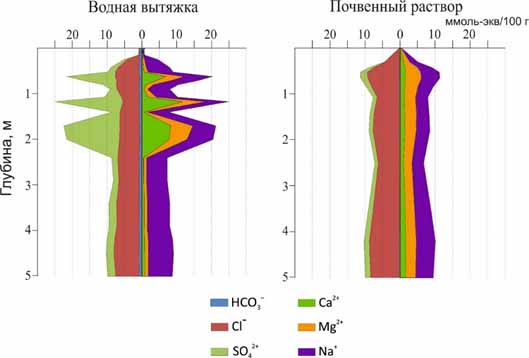Salt composition transformation in the Ishim steppe soils with changes in their moisture
DOI:
https://doi.org/10.31251/pos.v8i3.322Keywords:
Ishim steppe; soil solution; water extract; soil moisture; salt composition, salinization, ion-salt profile.Abstract
The aim of the study. To study the transformation of salt composition in the Ishim steppe soils as related with changes in their moisture content by comparing the chemical composition of the aqueous extract and soil solution under natural and increased moisture content.
Location of the study. The analysis was carried out with soil samples collected in the Ishim-Irtysh steppe interfluve (Ishim steppe) within the Omsk region (Russia).
Methods. A comparative analytical method was used to compare the chemical composition of the aqueous extract, moistened soil solution and soil solution of natural moisture.
Results. The effect of moisture change on the ion-salt system of heavy loamy soils of the Ishim steppe was studied. With an increase in the soil moisture content the amount of dissolved salts in it invariably increased, which is associated with the solubility of both solid salts in soil and with the ongoing ion exchange processes. Such an increase is mainly due to the increased bicarbonate, sulfate and sodium concentrations. In gypsum-free samples, the decreased content of calcium and magnesium ions in the aqueous extract was observed, as compared with the soil solution. In gypsum-containing samples, on the contrary, an abrupt synchronous increase occurred not only in calcium and sulfate ions content, but also in magnesium in the aqueous extract. With an increase in soil moisture, a change in the ratio between individual ions occurred, significantly affecting the chemistry of salinization.
Conclusions. The increase in soil moisture was shown to shift the ratio of anions in the soil solution towards the sulfate, whereas soil drying shifted the ratio to the chloride type. As for the ratio of cations, increased soil moisture shifted it towards the sodium type and soil drying towards the magnesium type.
Downloads

Downloads
Published
How to Cite
Issue
Section
License
Copyright (c) 2025 The Journal of Soils and Environment

This work is licensed under a Creative Commons Attribution 4.0 International License.






